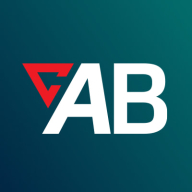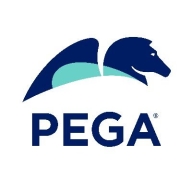

Pega Platform and ActiveBatch compete in the enterprise software market, focusing on process automation and case management. Pega Platform has the upper hand due to its comprehensive cloud offerings and ability to handle large-scale enterprise solutions.
Features: Pega Platform excels in case management, rapid prototyping, and integration services, utilizing its no-code environment to streamline business processes. It supports enterprise-level solutions effectively through Pega Cloud services. ActiveBatch focuses on robust automation capabilities, including comprehensive job scheduling and advanced workflow management. It excels in complex scheduling tasks and offers easy API integrations with extensive pre-built processes.
Room for Improvement: Pega Platform faces challenges with a complex user interface and expensive licensing. Enhancements are needed for cloud capabilities, AI integration, and accessibility for novice developers. ActiveBatch could improve user experience with a more intuitive interface and better support for event-based triggers. Pricing transparency and enhancing reliability under high-load conditions are necessary developments.
Ease of Deployment and Customer Service: Pega Platform provides flexible deployment options across public, private, and hybrid clouds, along with on-premises setups. However, its technical support has mixed reviews regarding responsiveness. ActiveBatch is known for its ease of on-premises and hybrid cloud deployment, though it has a steeper learning curve. Its customer service is praised for being responsive, but it could benefit from deeper knowledge on unique issues.
Pricing and ROI: Pega Platform is perceived as expensive, with licensing posing challenges for SMEs. Its comprehensive features, however, offer significant ROI for large organizations. ActiveBatch presents competitive pricing and a flexible, cost-effective licensing model. Users often find the investment valuable due to the efficiency gains and process optimizations it offers.


ActiveBatch by Redwood enhances efficiency with features like job scheduling, integration, and real-time monitoring. It supports diverse platforms, automates tasks, and offers a single-pane view with robust security.
ActiveBatch streamlines automation by offering drag-and-drop functionality, pre-built job steps, and native integrations. Its customizable workflows and alert system aid in managing complex workloads like data processing and server monitoring across hybrid environments. While it effectively reduces manual errors and enhances productivity, areas like navigation and support for cloud platforms need enhancement. New users may face challenges due to its complexity and steep learning curve, and further improvements in reporting, mobile access, and training could provide additional support to users.
What important features does ActiveBatch offer?In finance, ActiveBatch is implemented for orchestrating batch processes and data management. The healthcare industry utilizes it for automating patient data updates and server monitoring, while the retail sector benefits from file transfers and inventory management automation.
Pega Platform facilitates business process management, case management, and workflow automation for industries like banking, insurance, and healthcare. It supports digital transformation and customer service enhancements with its low-code capabilities and seamless integrations.
Pega Platform enables users to create efficient systems for case management, financial operations, and digital transformations. It provides tools for client onboarding, quoting, claims processing, customer experience improvements, and content management. Pega's low-code approach allows for the automation of complex processes, making it suitable for enterprises looking for adaptability and rapid deployment. While it offers strong real-time analytics and decision automation, users acknowledge challenges in user interface, integration, and performance aspects. High costs and a learning curve need attention, and enhancements in AI features and cloud services are desired.
What are the key features of Pega Platform?In banking, Pega Platform automates loan processing, accelerates customer onboarding, and manages compliance. Insurance companies benefit from streamlined claims processing and policy management. Healthcare sectors use the platform for patient engagement and care coordination, enabling organizations to adapt quickly to changing industry requirements.
We monitor all Process Automation reviews to prevent fraudulent reviews and keep review quality high. We do not post reviews by company employees or direct competitors. We validate each review for authenticity via cross-reference with LinkedIn, and personal follow-up with the reviewer when necessary.